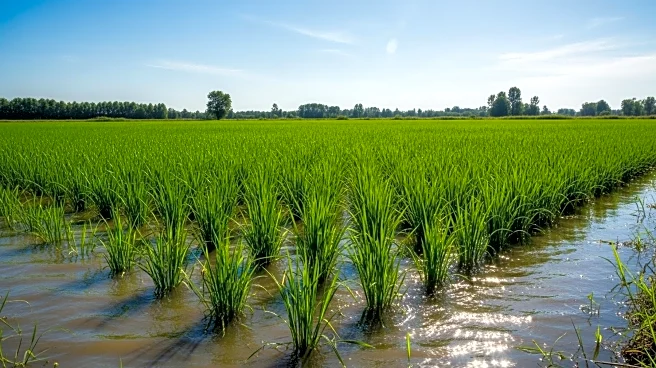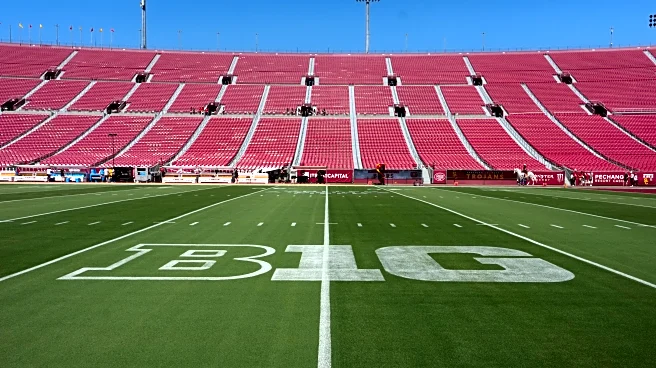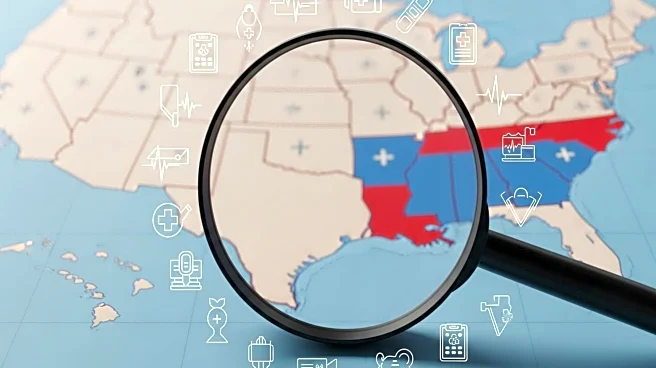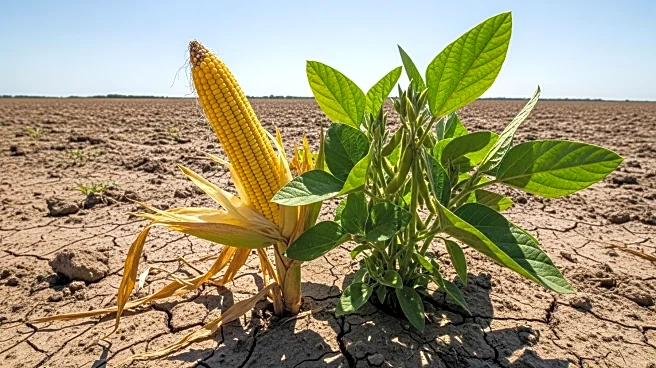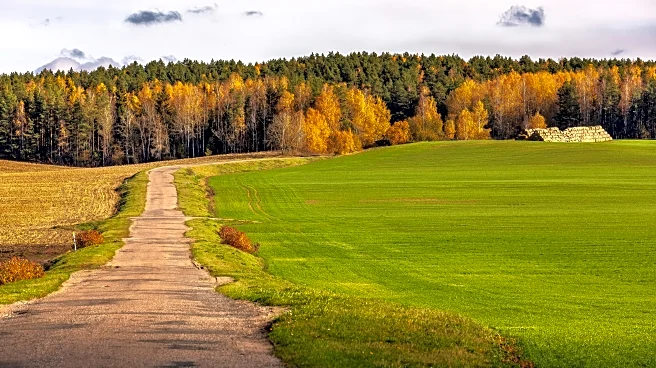What is the story about?
What's Happening?
Blake Gerard, a farmer in Southern Illinois, has successfully transitioned his fields from traditional crops like corn and soybeans to rice, adapting to frequent flooding in the region. Gerard's farm, located near the confluence of the Ohio and Mississippi rivers, faces increasing precipitation due to climate change. By converting his fields into rice paddies, Gerard utilizes the area's natural flooding to his advantage, maintaining a steady water blanket for rice cultivation. This shift demonstrates the potential for crop diversification in the Corn Belt, despite federal farm policies favoring soybeans and corn.
Why It's Important?
Gerard's innovative approach highlights the challenges and opportunities in adapting agriculture to climate change. As extreme weather events become more common, traditional crops may struggle, necessitating diversification. Rice, a crop that thrives in water, offers a viable alternative for flood-prone areas. However, federal policies and subsidies heavily favor corn and soybeans, making transitions difficult for many farmers. Gerard's success underscores the need for policy changes to support crop diversification and climate resilience in agriculture.
What's Next?
Gerard's farm received a Climate-Smart Commodities grant, allowing investment in soil moisture meters and water monitors. However, funding uncertainties under the Trump administration have posed challenges. As climate change continues to impact agriculture, there may be increased advocacy for policy reforms to support diverse crop rotations and sustainable farming practices. Gerard's experience could serve as a model for other farmers facing similar challenges, prompting broader discussions on agricultural adaptation.
AI Generated Content
Do you find this article useful?
